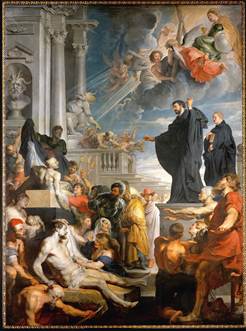
The background of Peter Paul Rubens’s Miracles of St. Francis Xavier, painted in 1617 for the Jesuit church in Antwerp, contains a surprising detail - a horned Hindu idol that is being destroyed by rays of light emanating from an allegory of the Catholic Faith. Far from being meaningless exotica, the Hindu idol plays an important iconographic role in the larger decorative scheme of the Antwerp Jesuit church. Designed by Rubens in 1620 and executed by his assistants, the ceiling decoration of the side aisles and galleries contains several other images of the destruction of idols by early Christian saints such as St. Eugenia and St. John Chrysostom. There is no other Jesuit church in the world where the themes of iconoclasm and idol smashing are so prominent. This iconography must have had special significance for audiences in Antwerp. In the course of this presentation, I will demonstrate that the events of the late sixteenth century, including the iconoclasm of 1566 and the tyrannical governorship of the Duke of Alba, still resonated in Antwerp and led Rubens to make certain iconographic choices when confronted with the problem of how to depict the destruction of religious images in a city that was still recovering from wounds inflicted by revolt, oppression, mutiny, and war.

